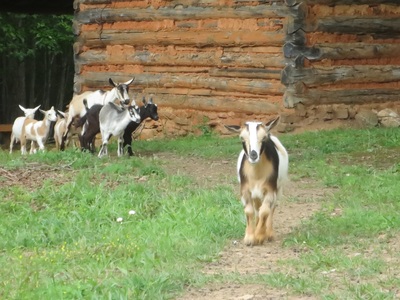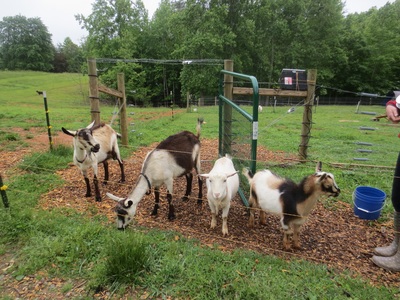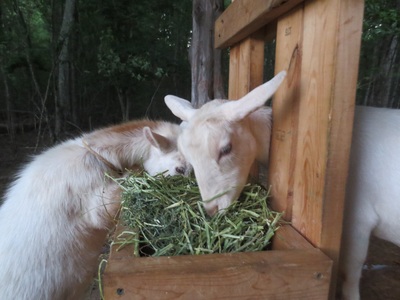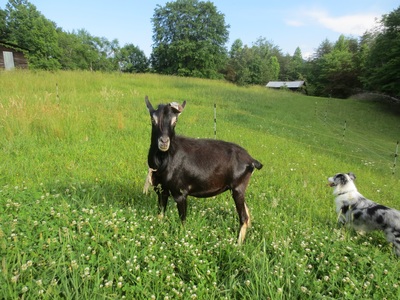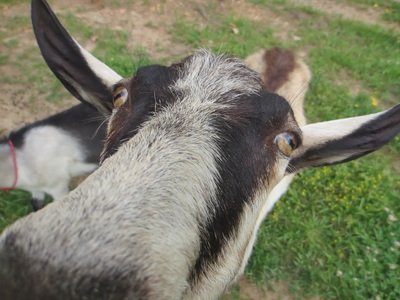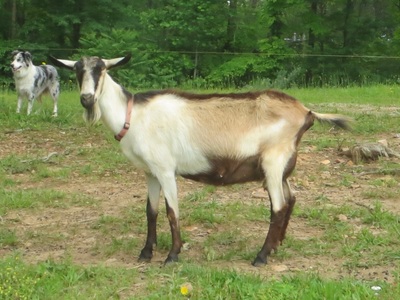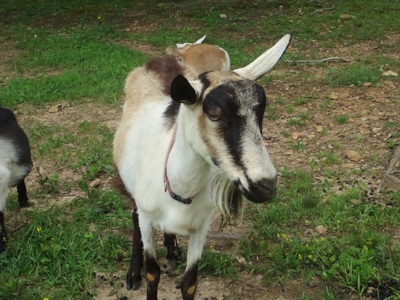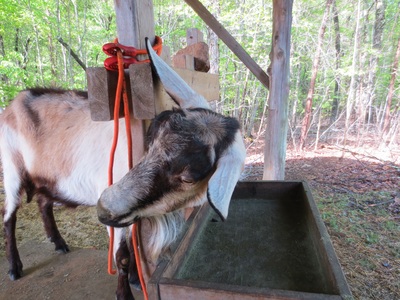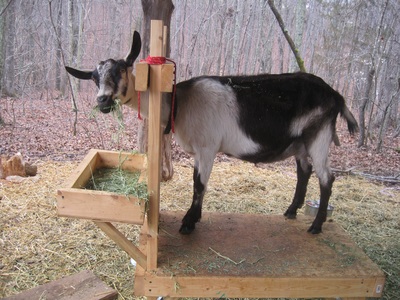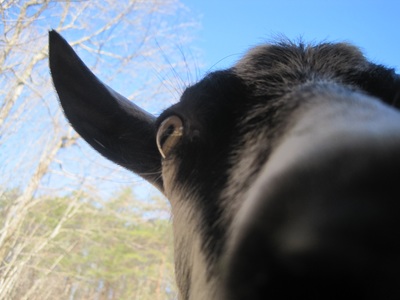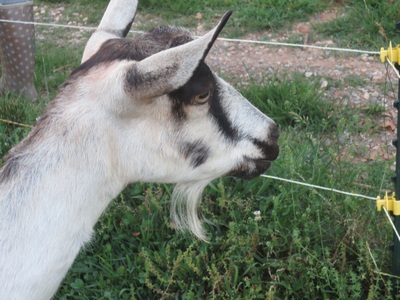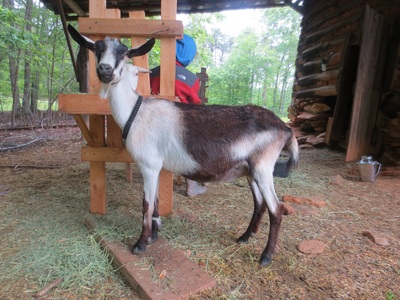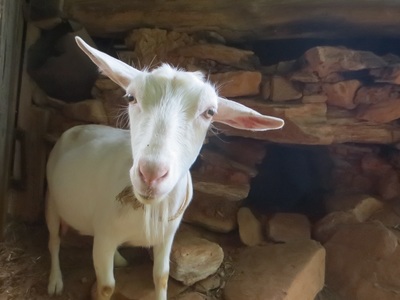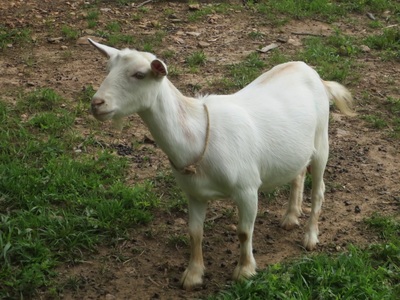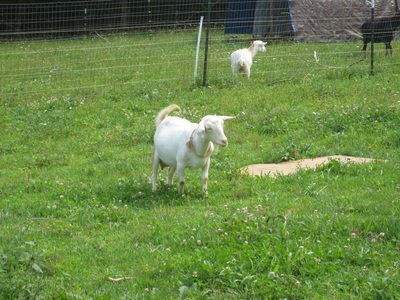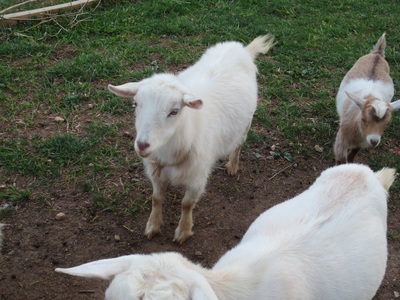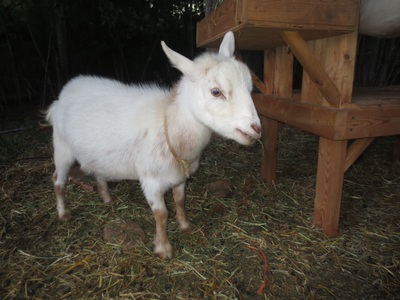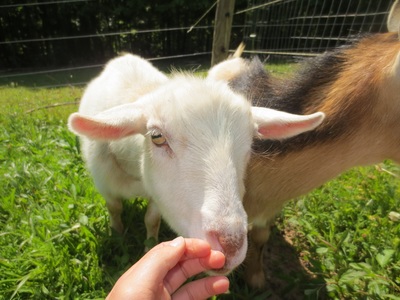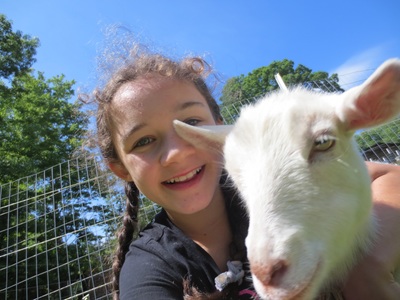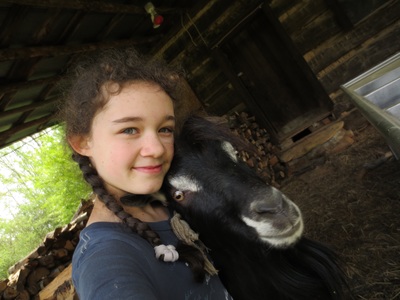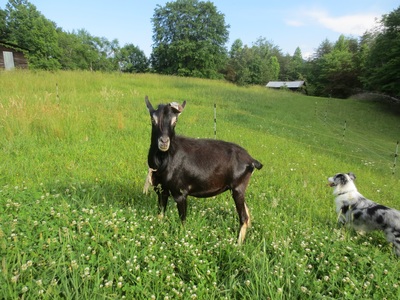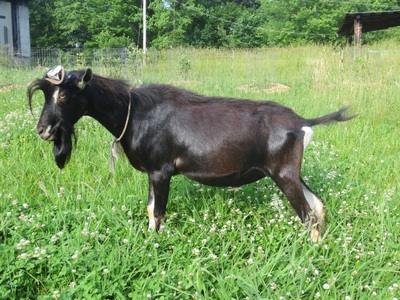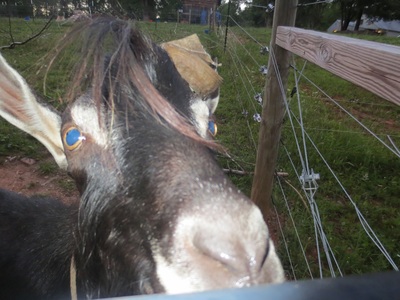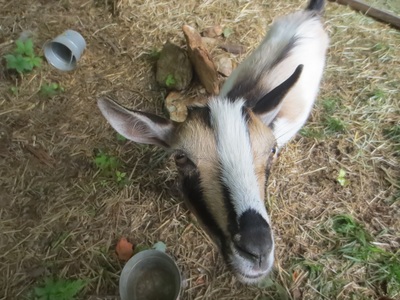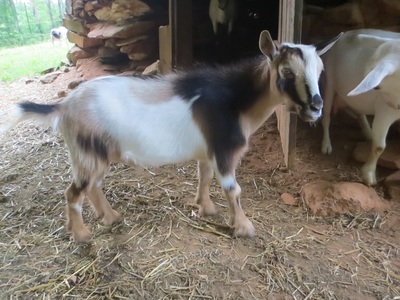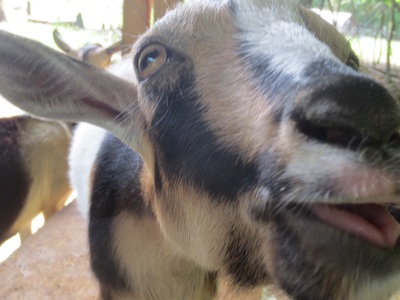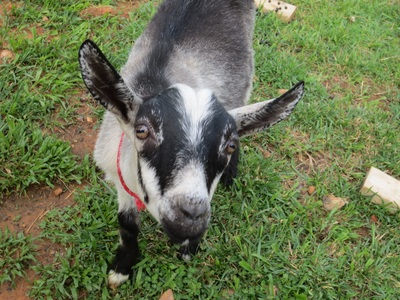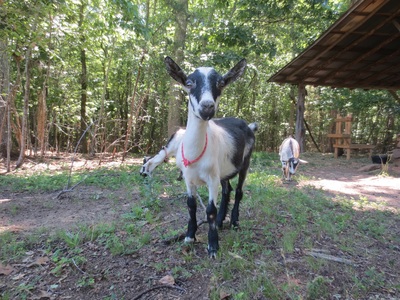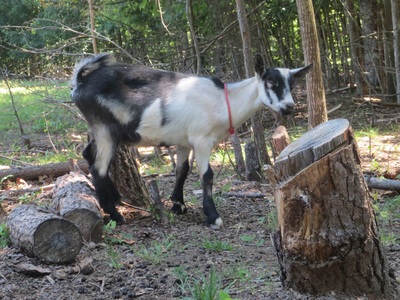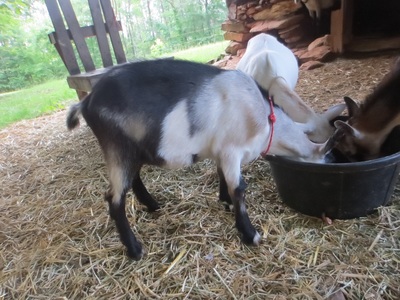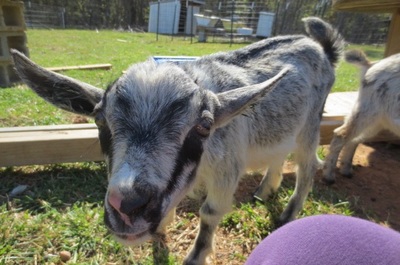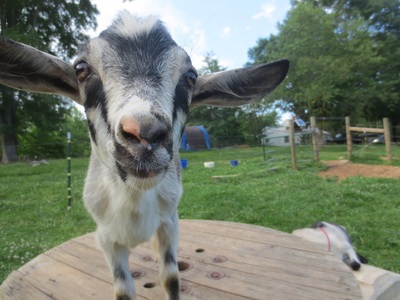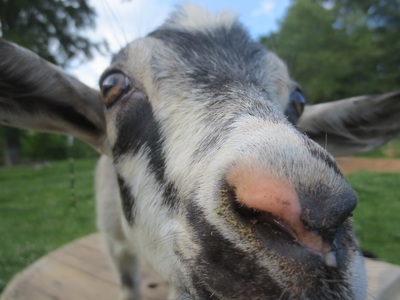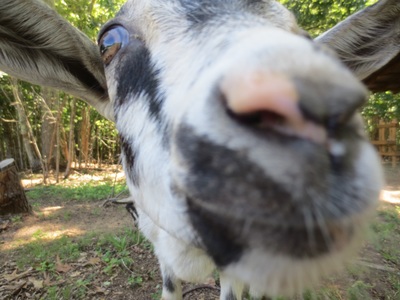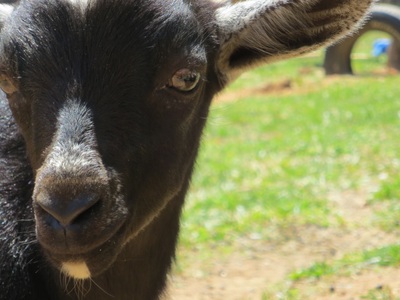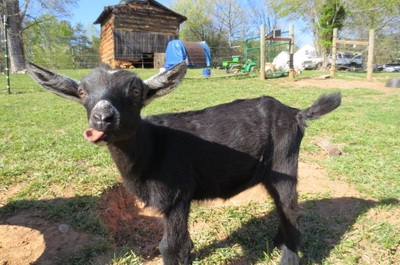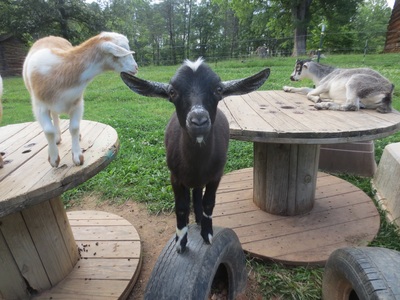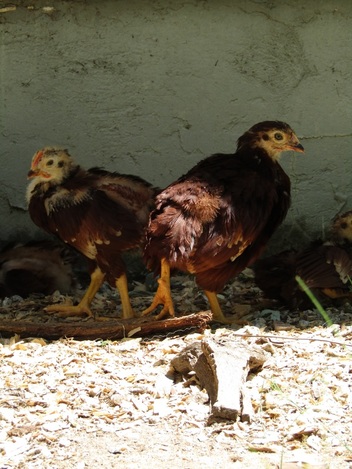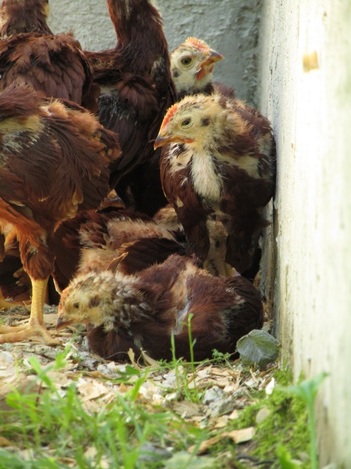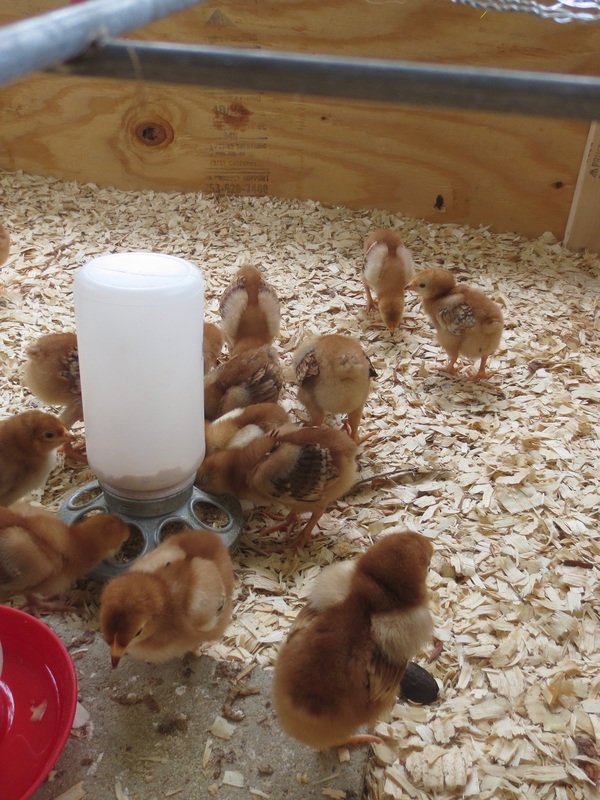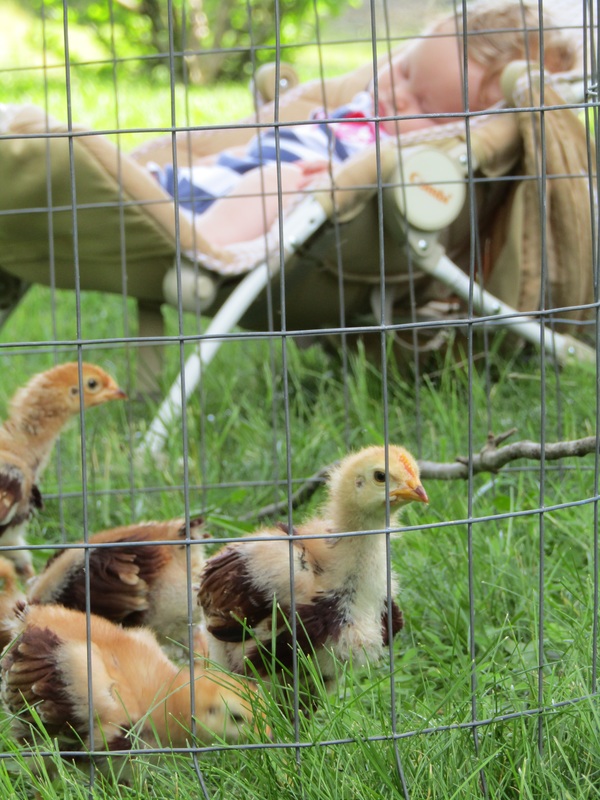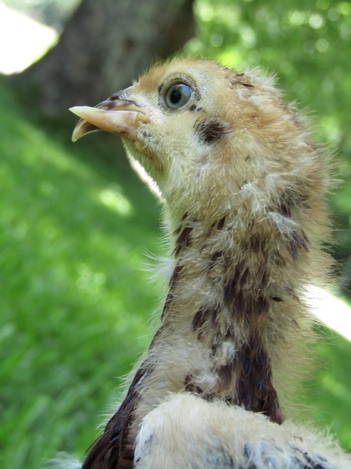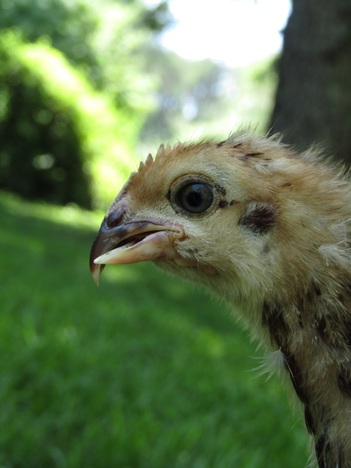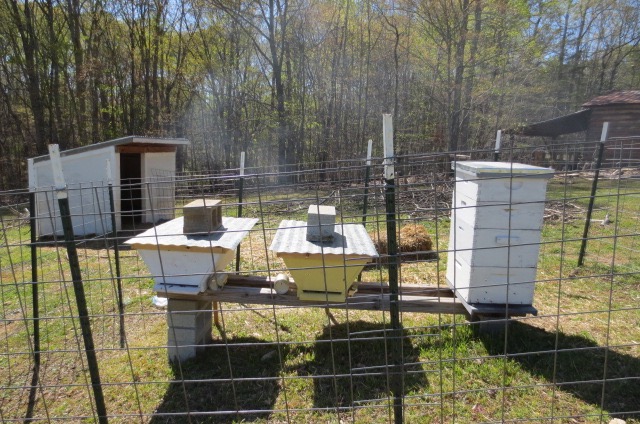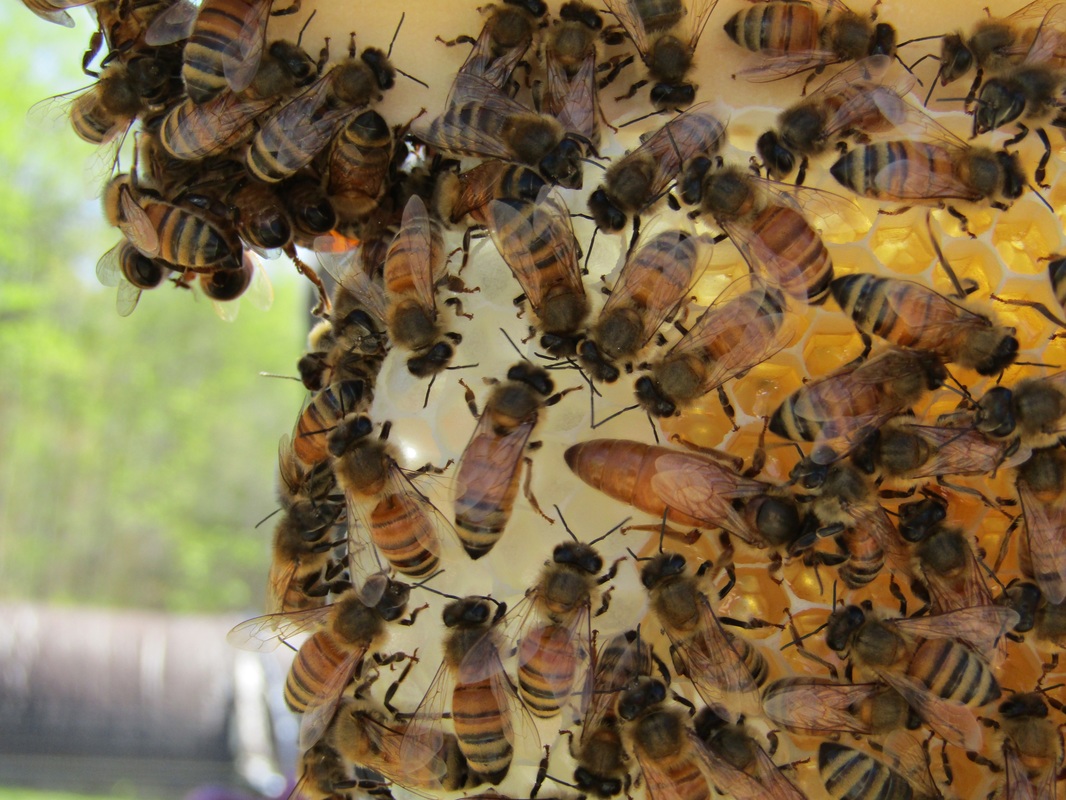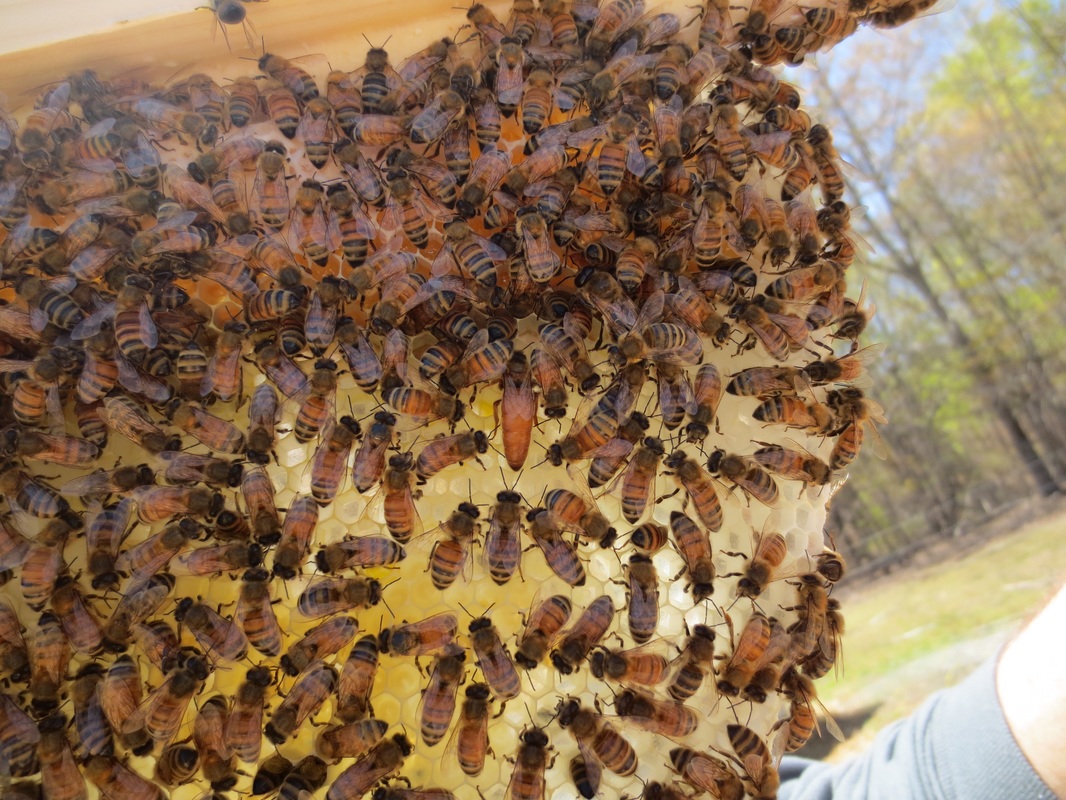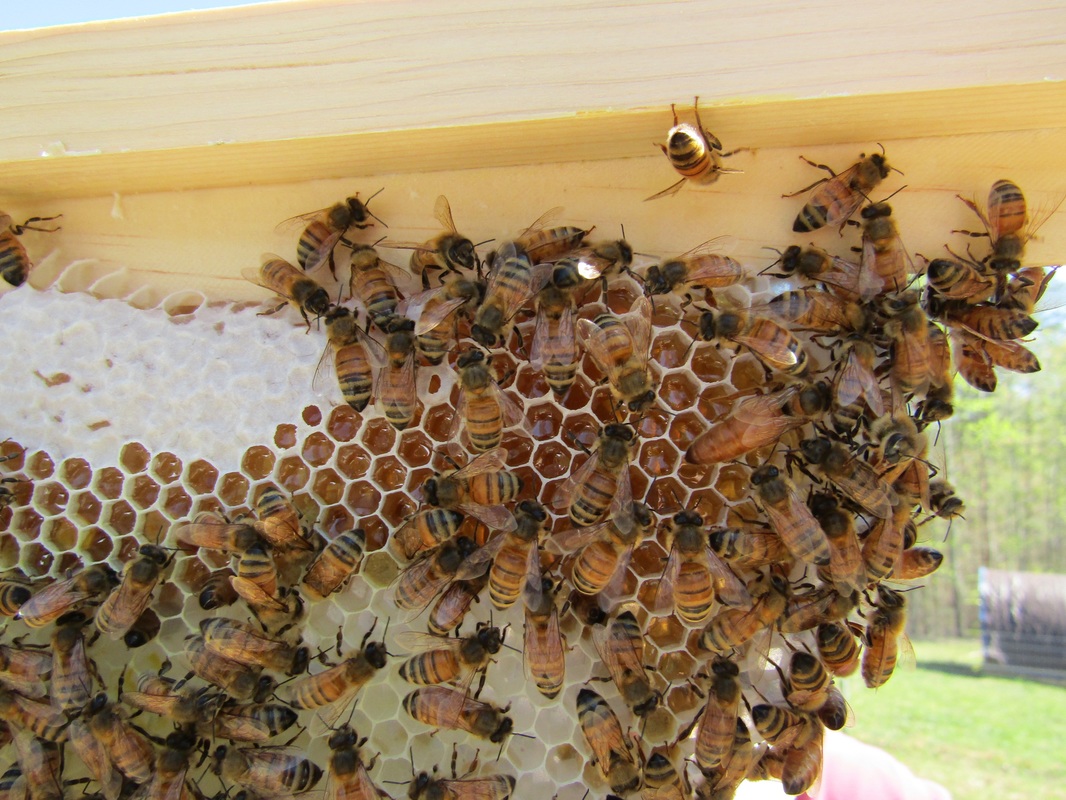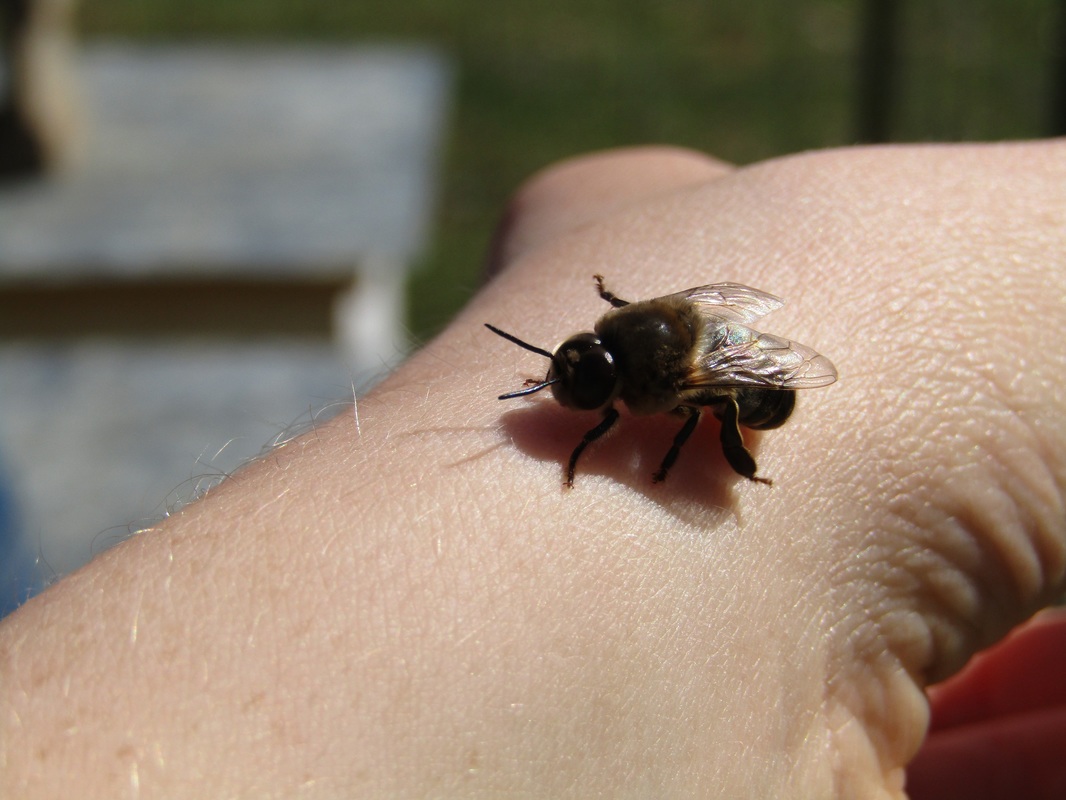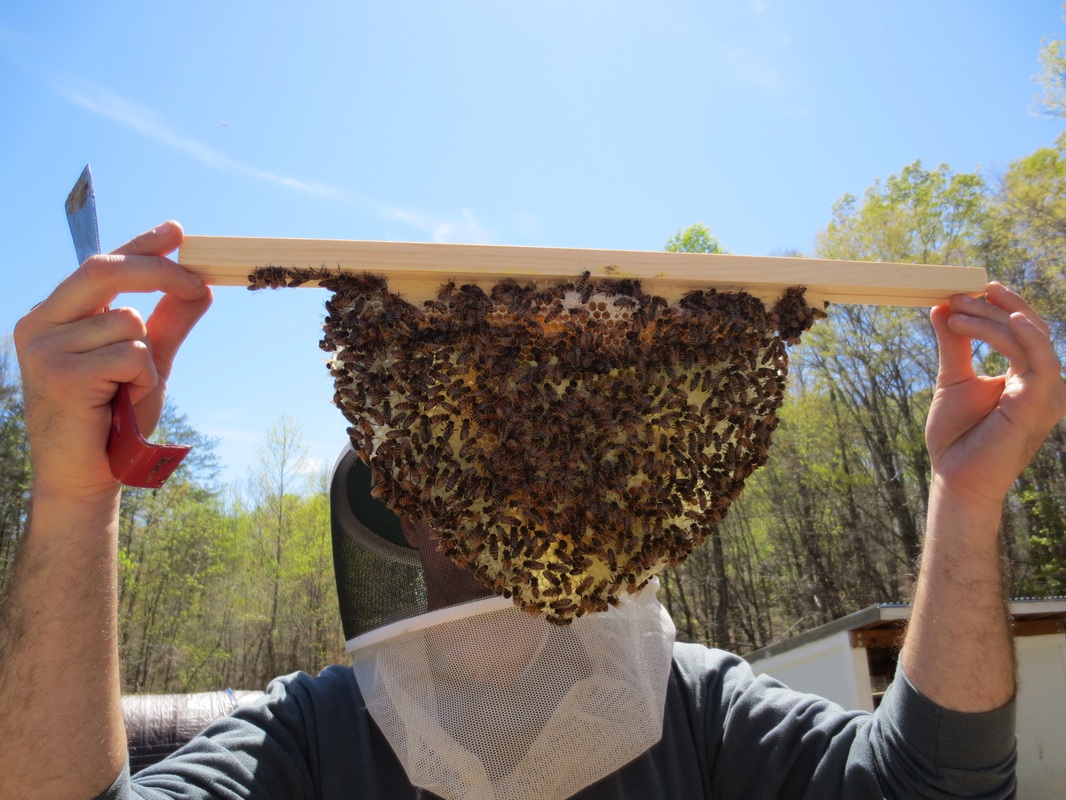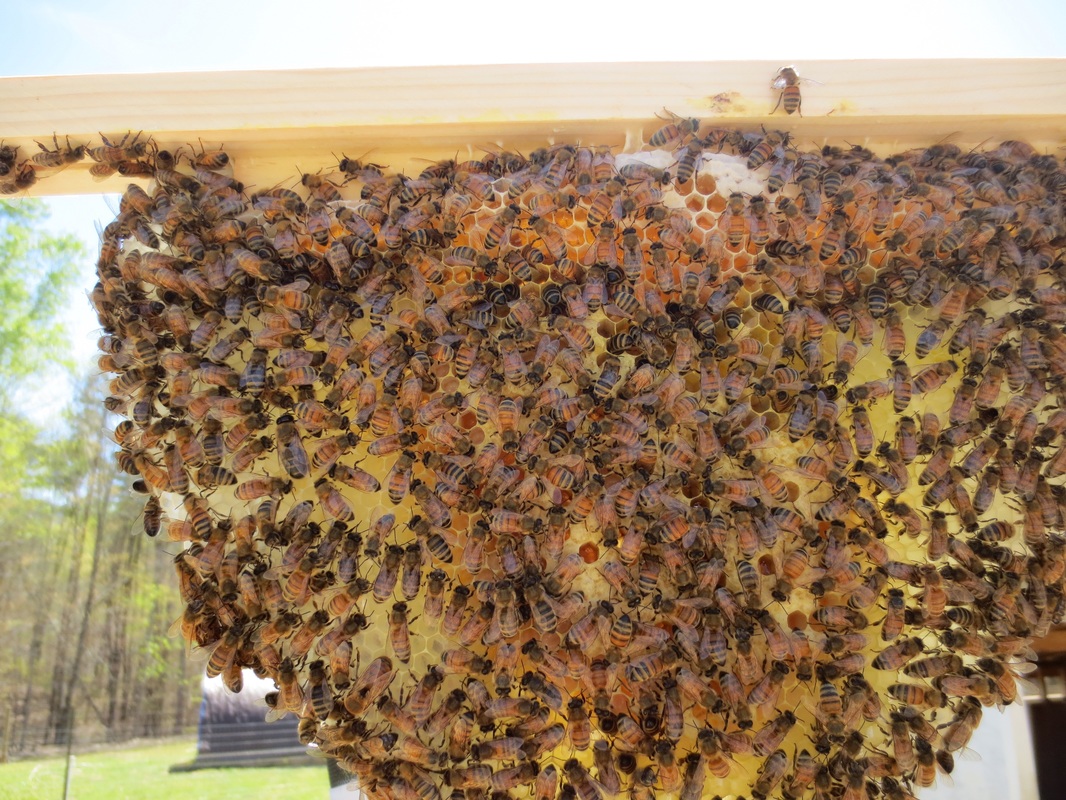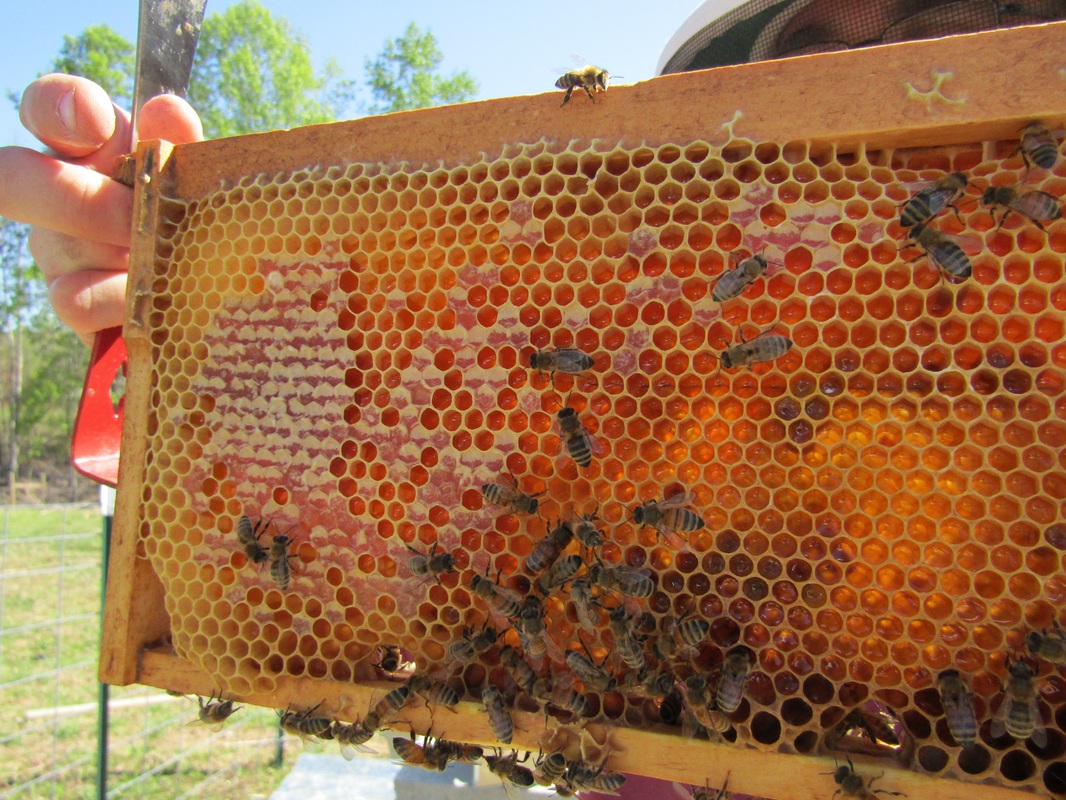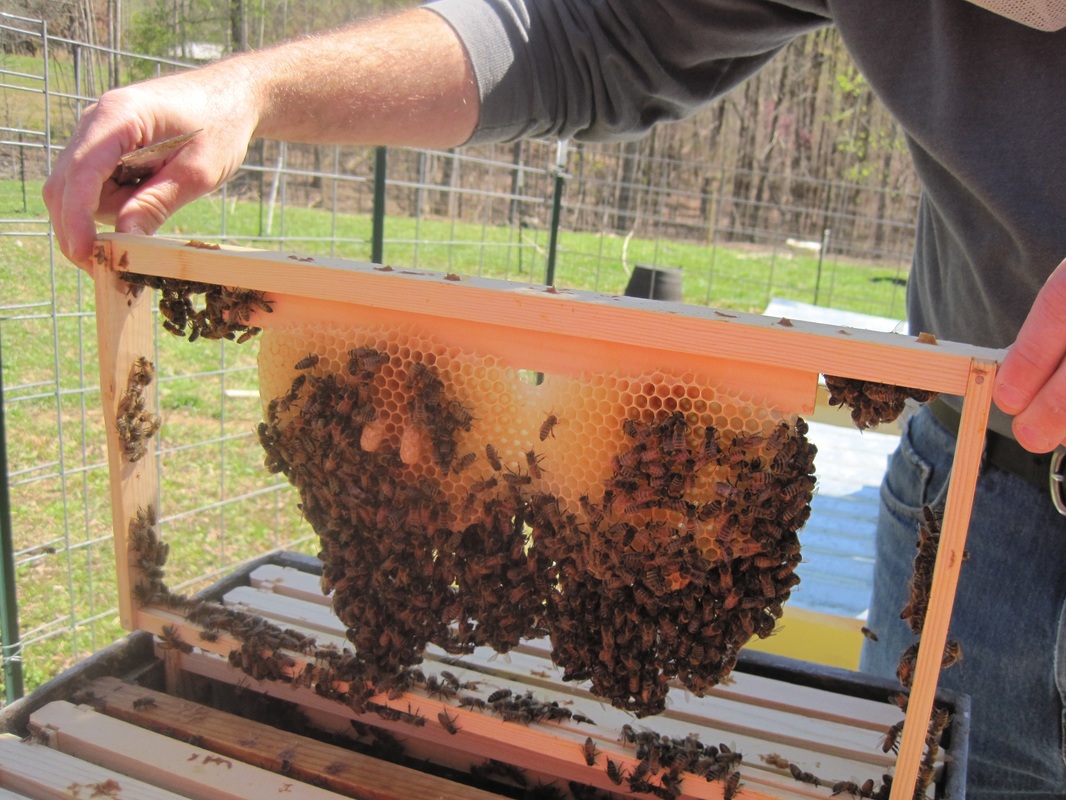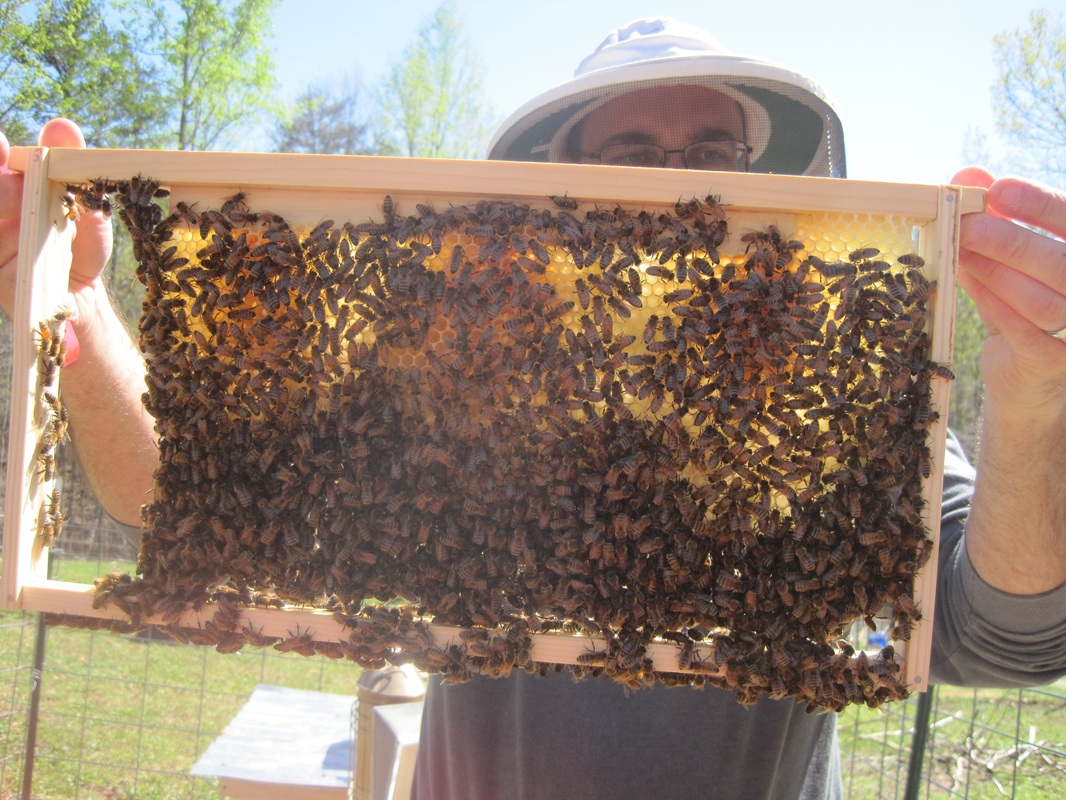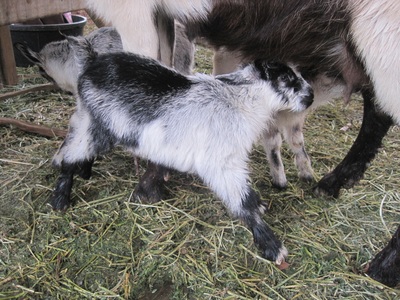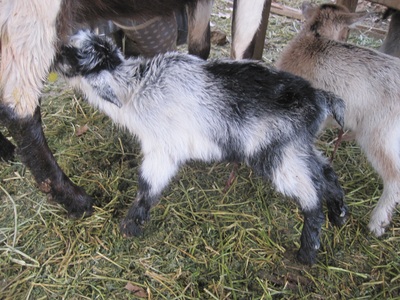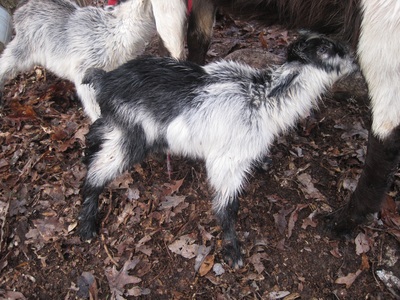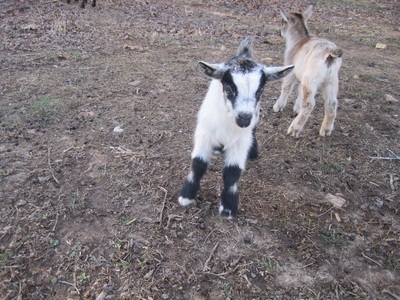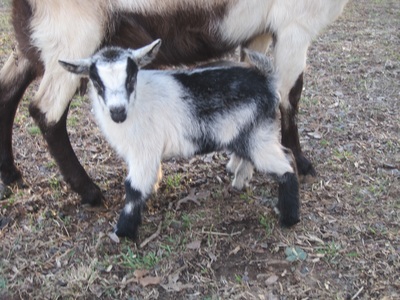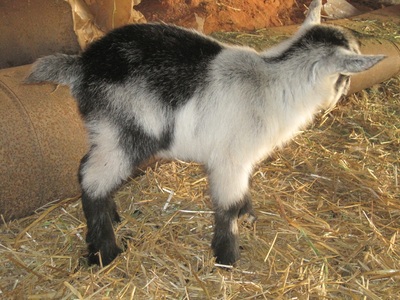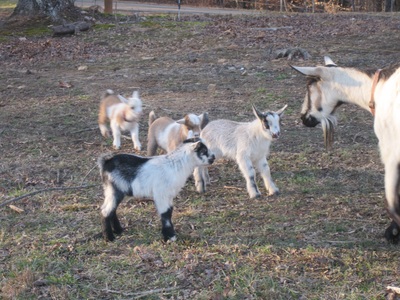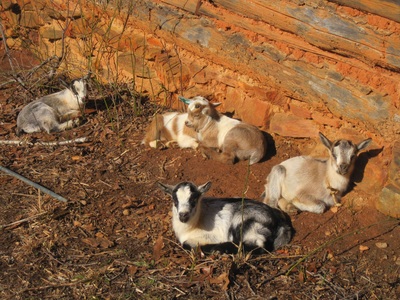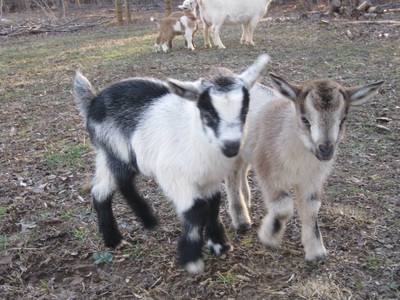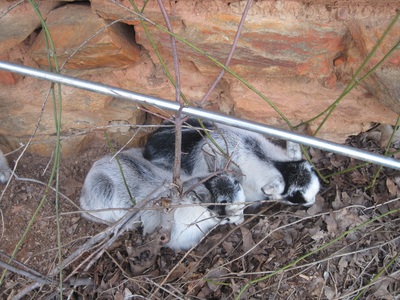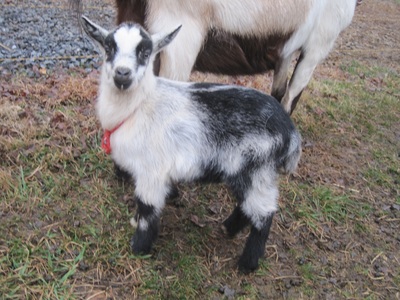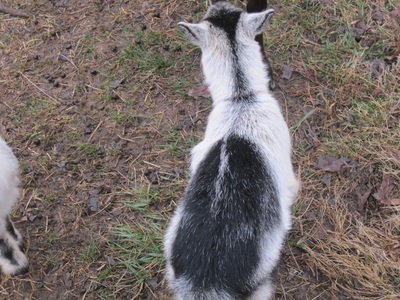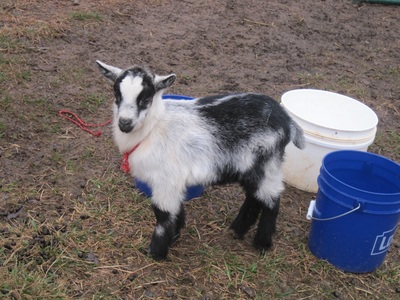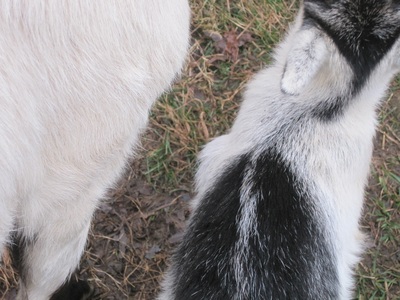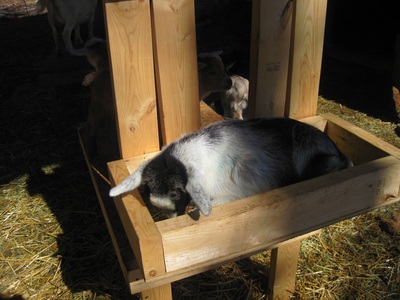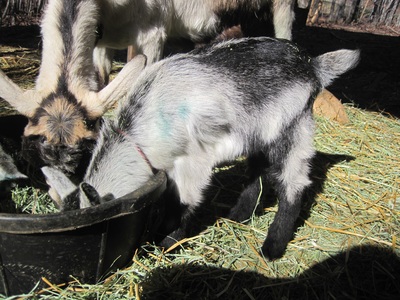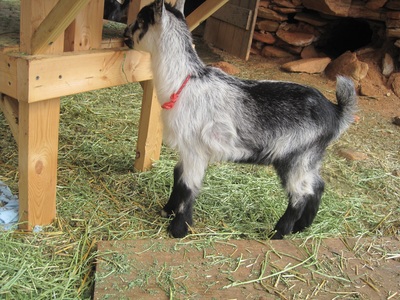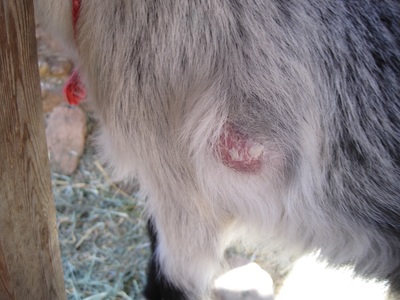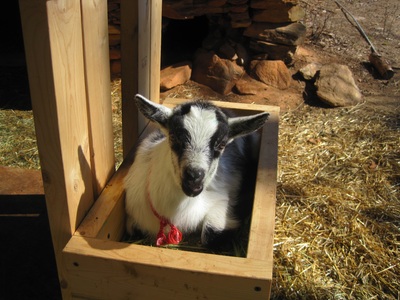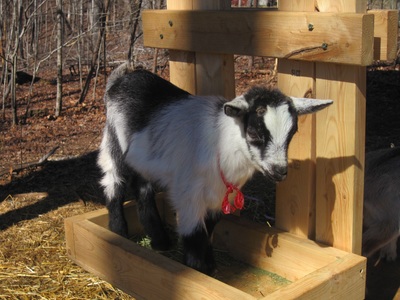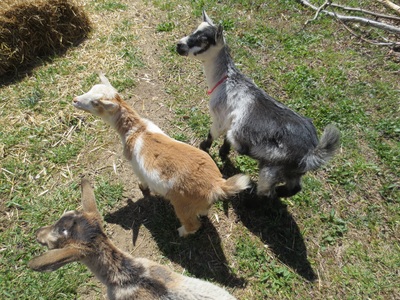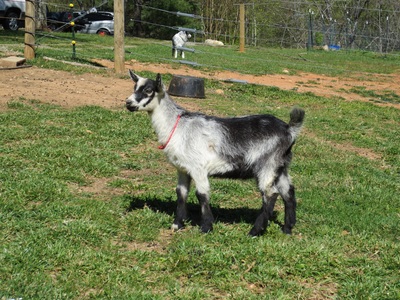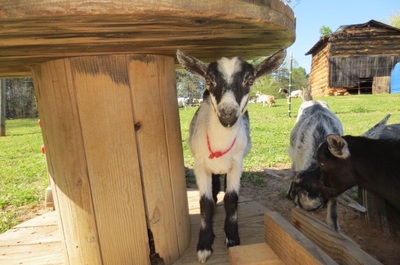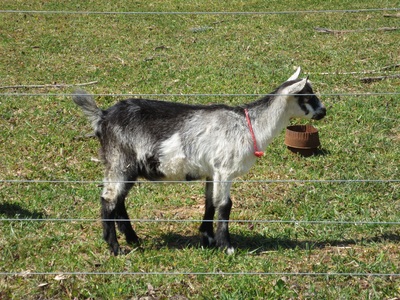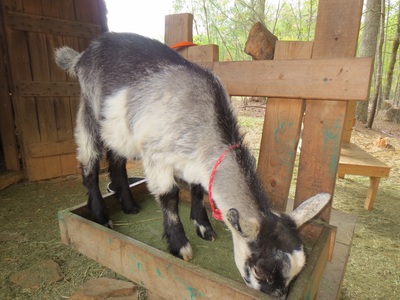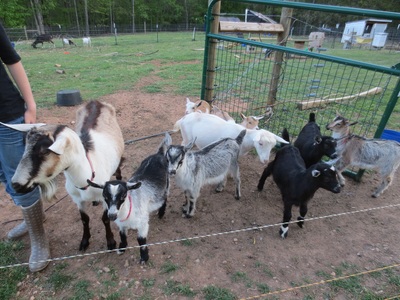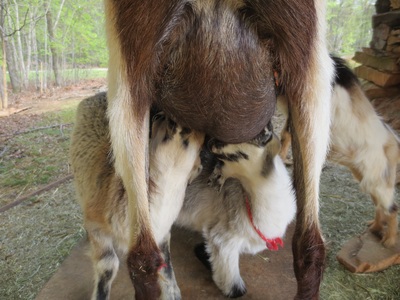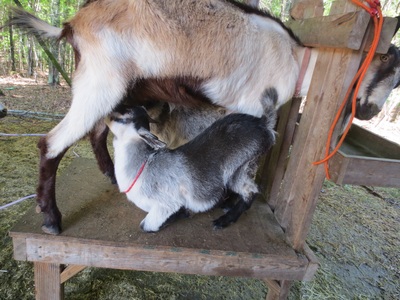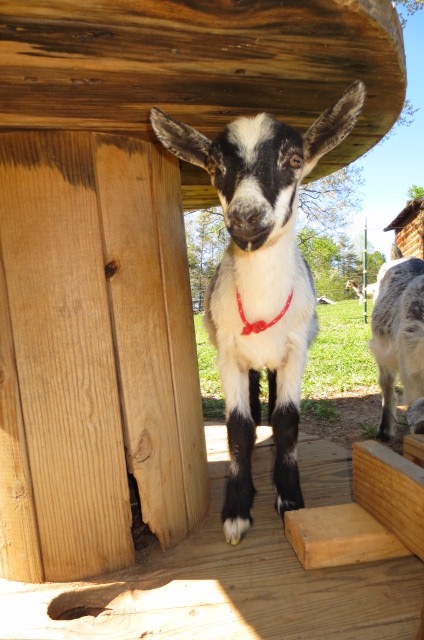Jenny is the same mean old goat as ever. She still holds her place as herd queen, leading everyone on expeditions through the woods and making sure they all stay in their places.
Jenny kidded with triplets in February. It was her third kidding. The other two times, she only had two kids. She was able to meet each individual need much better with those kiddings. With triplets, it was always just a big fight for the udder, three kids fighting for two teats. That wasn't much to her liking. She couldn't always make sure the runt had enough.
Jenny has been a great milker this year. The other two have almost dried up, but this gal is still going strong. Because of too many single kids favoring one side of her udder, it has became almost hopelessly lopsided and uneven. We are still working to fix that (we have been for the past three milking seasons) but I think we are finally making headway.
Honey, Jenny's daughter, has become a very sweet little doe. She has gotten very friendly since kidding. Surprisingly enough, Honey is our best behaved doe on the stand. Before she kidded, she would do anything she could to get away from you if you tried to touch her legs or belly, not to mention her teats. Now she is the only doe we have that doesn't have to have her back legs tied to prevent her from kicking over the pail.
Honey kidded three weeks after Jenny with two pitch black little kids. She loved them dearly. She didn't like to let them nurse, whenever they nursed she would hunch up her back. However, she felt guilty about this and would always push them to the teats to make them nurse. She is our only doe that almost never kicks her kids to make them stop nursing or tells them they can't nurse. If she must, she very gently steps over them.
Honey's production was outstanding, but she's dried off quickly. For a while she was giving six to seven cups a day.
Honey is partially the herd queen - she has all the benefits of being herd queen: eating the best food, sleeping in the best spots, etc, while Jenny does the dirty work: ensuring that rank.
Pinky hasn't changed much. If anything, she is even more picky and disdainful and stuck-up. Of course, Jane continues to pamper the little princess.
Pinky kidded in January, five days after mom had her baby. She loved her kids for a while, but when they left the farm she couldn't have cared less.
Pinky had great production for a first freshener Nigerian, but, like Honey, she dropped off pretty rapidly. At two weeks fresh she was giving a pint a day and nursing kids, at about a month fresh she was giving over a quart and still nursing, but now, at four months fresh, she's barely giving a pint with twice daily milking.
Pinky is horrible on the stand; the polar opposite of Honey. We have to tie her back legs up really well and even then she often gets the milk spoiled anyway.
Binky is just as sweet a little marshmallow as he has always been. When a goat is wethered, it pretty much means they are permanently turned into babies. Binky is sweet, cute, friendly, small, fluffy, adorable, and pretty much any other desirable characteristics in baby goats. He is the only wether on the farm that is going to stay here forever, so Jane and I have named him the Herd Baby. He will always be a baby, he won't grow up like other kids, and he will always stay here. Other babies will come and go, but not the Binks.
Binky is Pinky's sister, and acts like her baby. After we had taken such special care to make sure Binky was at Pinky's birth, he decided the little minions were not to his liking. Binky jealously guards his place as Pinky's baby, and did not want other goats to take his place. Pinky in turn jealously guarded her babies and was rather inconsiderate of the poor Binks. After Pinky's kids got a little bigger, she didn't care for them any more and Binky and the kids became chums, so it turned out pretty well.
When Ebony is in rut, Binky turns yellow. (That's all the explaining I'm going to do, I will leave it to your imagination how this phenomenon comes about.) When Ebony comes out of rut, in January, Binky gets all white and fluffy again. I have to learn again every January how cute Bink is. Right now, Binky is about as cute as it gets.
Ebony is doing well. We retained a buckling, now a wether, as a companion for him because he really needs a full-sized companion.
Quite a while ago, we had a temporary fence extending the buck pen. It had three lines, and was really rather short. Eb jumped over it a couple times, so we added another line on top. The problem was solved, or at least we thought. Just recently, we have found Ebony wandering around outside his pen quite a lot. He's gone to eat the blueberry bushes, visited the does, and gone to investigate the woods behind his pen. I finally caught him jumping over the fence, he cleared it like it was nothing. Sigh.
Eb has been getting bigger lately. The time before last when I trimmed his hooves, his withers (the highest point on his topline above his shoulders) were higher than the top part of the stand where his head goes in. This morning when I trimmed his hooves, he just barely squeezed his head in. He has a bulky, tough neck and his scur wasn't helping matters. When I finally got him all the way into the stand, he had to kneel on his front front knees with his rump way up high in the air, and even so his neck was quite close to the top of the stand. His rump, in addition to his withers, are now much too high to fit. I have no idea how I am going to trim his hooves the next time it needs doing.
Eb has a hilarious face. In addition to his beard, he has a rather large cowlick type of thing on top of his crown and now he has sideburns.
Hickory is still a silly, annoying little goat. We traded Jenny's second 2015 kid, Dahlia, for him in November. We hadn't yet sold Pecan, whom Hickory was replacing. Pecan had learned how to jump the fence and thus couldn't be kept as a herd sire. In the two weeks that they were together, Pecan taught Hickory how to jump the fence. We ended up wethering Hickory a few months after we got him.
Hickory is almost always in with the does. He comes to milking and jumps in the stands, he tries to eat grain with the kids at night, and when it is best to be a buck it the buck pen, he is a buck in the buck pen, eating hay and grain and leaves, or whatever other goodies fall the bucks' way.
Dontcha will be staying here indefinitely as a companion for Ebony.
Lad is Jenny's middle trip. Calling him a cow is the perfect way to describe his temperament. He doesn't think he can do a lot, he's a big baby. He also has a tendency to look like a cow in pictures.
Scarum is Honey's eldest. He is a sweet and annoying little kid. When his sister was still here, he hardly ever nursed, but as soon as she left Honey trained him to nurse often. To console herself for her lack of enthusiasm, I guess.
The Green T Goatherd
